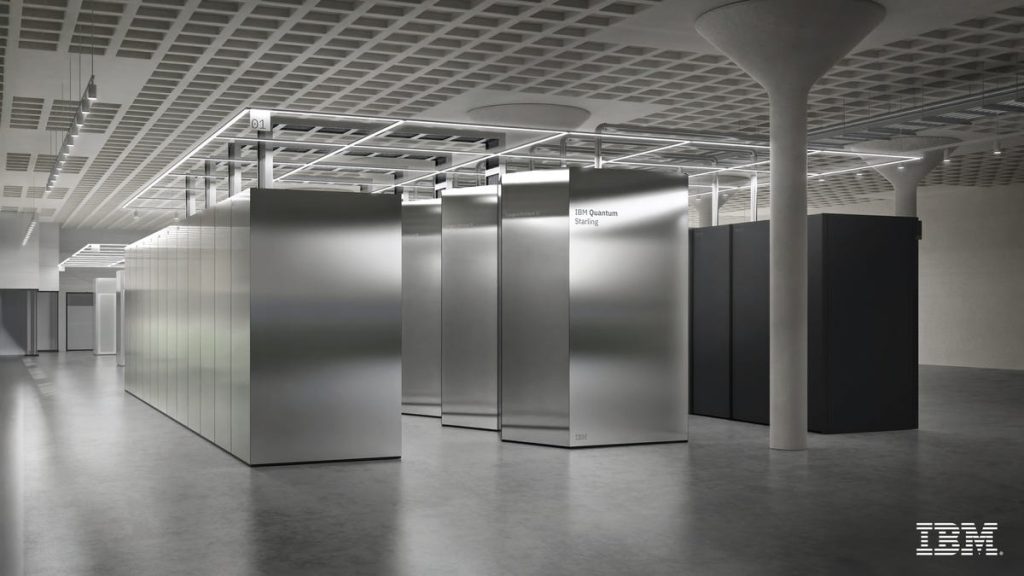IBM has revealed its plan for the world’s first large-scale fault-tolerant quantum computer, and it will be built in Poughkeepsie’s new IBM Quantum Data Center.
Announced on June 10, IBM’s quantum computer, dubbed IBM Starling, is planned to be up and running by 2029. A second large-scale system, dubbed IBM Blue Jay, will be housed at the Poughkeepsie facility by 2033.
IBM Starling aims to solve the question IBM leaders say is plaguing quantum computing: how to build something reliable out of unreliable parts.
“We feel at IBM, we’ve cracked the code to quantum error correction,” said Jay Gambetta, vice president of IBM Quantum.
What is a fault-tolerant quantum computer?
A fault-tolerant quantum computer, according to IBM, is a quantum computer designed to operate correctly even in the presence of errors. Quantum bits, or qubits — which can represent both 0 and 1 simultaneously, a jump from classical computer bits, or binary units, which can only represent 0 or 1 — are extremely sensitive to their environment and are prone to errors. Fault tolerance works to detect and correct these errors in real time.
IBM’s Starling will be capable of running 100 million qubit operations, using 200 logical qubits.
“IBM is charting the next frontier in quantum computing,” Arvind Krishna, IBM chairman and CEO, said in a statement. “Our expertise across mathematics, physics and engineering is paving the way for a large-scale, fault-tolerant quantum computer — one that will solve real-world challenges and unlock immense possibilities for business.”
How Poughkeepsie plays a role in IBM innovation
IBM has unveiled its path forward, releasing two papers outlining how it can make this a reality, and how Poughkeepsie will be the home to IBM Starling.
By 2033, the local IBM Quantum Data Center will also house IBM’s next large-scale system, Blue Jay, capable of performing 1 billion circuit operations, using 2000 logical qubits.
“With this news, we’re making our vision and our leadership in quantum computing clear,” Gambetta said. “It is important to instill confidence that a large-scale, fault-tolerant quantum computer isn’t a dream; it is a reality.”
What makes IBM Starling unique
Building off a 2024 paper published by IBM on “breakthrough error correction,” said Matthias Steffen, head of quantum processor technology at IBM, the two new papers published with the June 10 announcement “demonstrate the essential criteria for a large-scale error-correction approach.”
As well as being “fault-tolerant,” according to a statement from IBM, the other essential criteria include:
Preparing and measuring logical qubits through computation.Applying universal instructions to these logical qubits.Decoding measurements from logical qubits in real-time and altering subsequent instructions.Modular, to scale to hundreds or thousands of logical qubits, to run more complex algorithms.Executing meaningful algorithms with realistic physical resources, such as energy and infrastructure.
“As of today, no one has demonstrated a credible path to simultaneously demonstrate all of these criteria, nor has anyone shown a credible plan to do so together,” Steffen said. “These innovations will combine to deliver Starling.”
What’s next for IBM
Gambetta said the future of quantum information science could include simulating nature.
This may look like making lighter, but stronger materials, learning how certain reactions create bacteria or advanced math. There may also be implications in machine learning, generative AI and breaking encryption.
“It’s probably the things that we don’t know, that haven’t been discovered by the algorithms, that will have the most impact,” Gambetta said.
IBM Quantum Kookaburra is expected in 2026 and IBM Quantum Cockatoo is expected in 2027, both of which are hardware advancements designed to culminate in IBM Starling.
“We’re confident that fault-tolerant and large-scale quantum computing is no longer a question of science, but it’s an engineering challenge, and we’re certain we can build it,” Gambetta said.
Poughkeepsie’s IBM Quantum Data Center will house four of IBM’s Quantum System Two, a building block for how IBM will make their systems going forward in 2026, one of which is already running, according to Gambetta.
The Poughkeepsie facility is home to the hardware, but the software, the “algorithm discovery,” is the other key component necessary to make IBM Starling a reality. This is being researched by IBM’s community of quantum partners.
“The goal of IBM Quantum in general is to build this hardware, and working with our partners on the algorithms, we are very much hoping that a future of the quantum industry, demonstration of quantum advantage and much more will definitely happen in the next few years,” Gambetta said.

